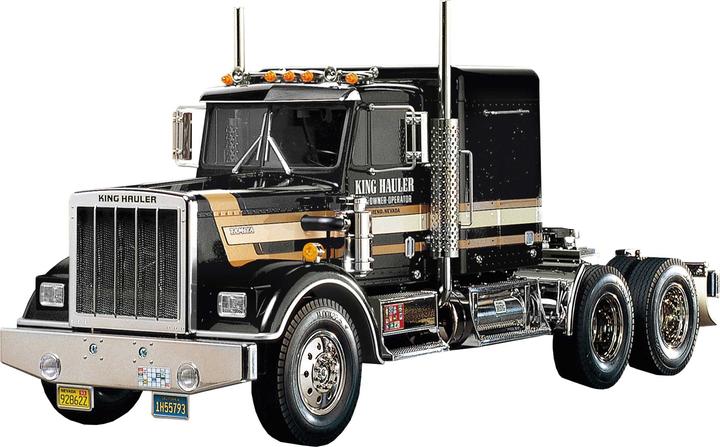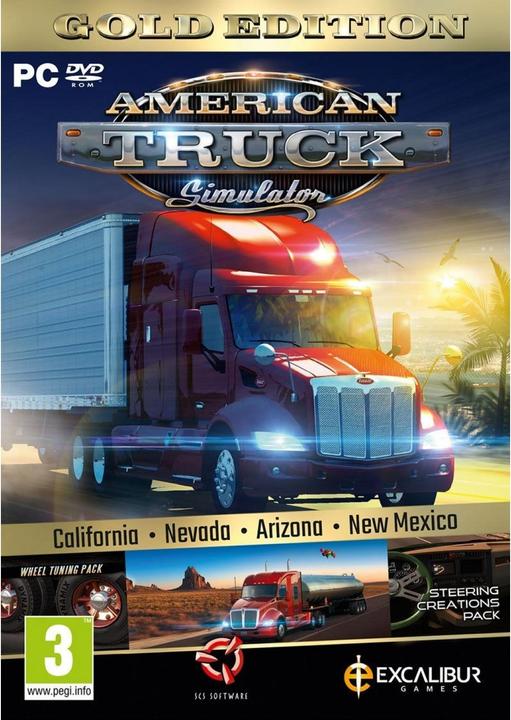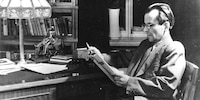
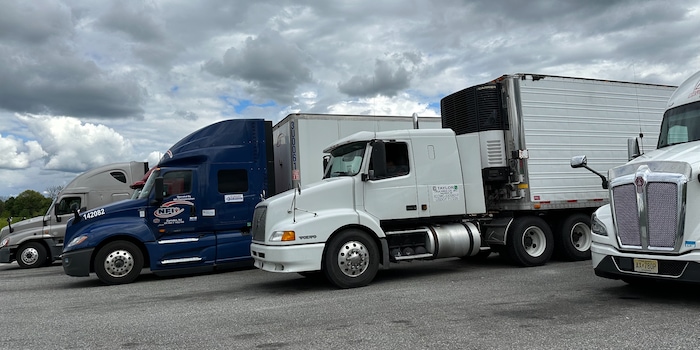
Come to think of it, why do US trucks have such long noses?
Anyone who’s travelled on US highways will be familiar with the imposing trucks and their long noses. They’re very different from the trucks in Europe. Flat noses are the norm here, courtesy of a German transport minister.
Mile after mile to the west, then back again. In all the hours spent on US highways, something struck me: trucks are so much bigger there than here in Europe. I thought back to TV heroes of my childhood, growing up in Germany. There was the 1977 movie Smokey and the Bandit with Burt Reynolds as Bandit, who drives 400 cases of beer from Texas to Georgia with his buddy Snowman in the latter’s truck. Or the [1978 German TV series «Auf Achse» (Engl.: on the road)](https://de.wikipedia.org/wiki/Auf_Achse_(TV series)) starring Manfred Krug as Franz Meersdonk on various trucking adventures. Hollywood had a monstrous Kenworth W-900 roll across cinema screens; the German ARD production saw Meersdonk sat at the wheel of a Mercedes-Benz NG 1632.
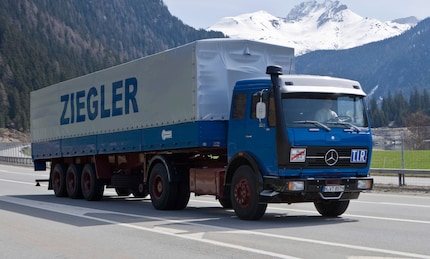
Source: Mercedes Benz AG
I mused on what it would have been like had the trucks been reversed – with Meersdonk in the US truck, and Snowman behind the wheel of the cab-over-engine Mercedes. A strange notion, isn’t it?
So, why exactly are trucks in the USA so much bigger?
The short answer is that it’s down to one man: Hans-Christoph Seebohm and a set of laws he introduced. These laws first flattened the noses of German trucks, later spreading to trucks throughout Europe. Starting in 1956, Seebohm restricted the dimensions and weights of trucks in order to make freight transport with the Deutsche Bundesbahn (DB, German Federal Railway) more competitive. His thinking? Shorter trucks mean less cargo space. But Seebohm didn’t consider the truck manufacturers’ response. As the tractor unit was included in the measurement, manufacturers shortened the front of their vehicles in order to add more loading volume to the back. Over time, regulations within the European Economic Area (EEA) resulted in the trucks becoming a little longer than Minister Seebohm wanted. The nose, however, didn’t grow. Today, a truck in the EU may be a maximum of 18.75 metres long – measured from the foremost point of the driver's cab to the very end of the trailer. A semi-trailer combination, that is, the combination of a tractor unit and a semi-trailer, may not exceed a length of 16.50 metres.
Long-nose trucks were around after the war
In the post-war period – before Seebohm’s intervention – long-nose trucks dominated German roads. In long-nose trucks, the engine lies in front of the front axle, and the driver’s cab is located behind the engine. In short-nose trucks, the engine lies on the axle, and the cab is on top of the engine.
The trucks produced in Germany by manufacturers such as Faun, Magirus Deutz, MAN and Mercedes Benz usually had a nose, be it a long or short one. The hood provided ample space for the large engine, which could be easily reached for repair and maintenance. There were no regulations yet defining how long a truck could be. With that, most manufacturers simply continued building what they had built before and partly also during the war.
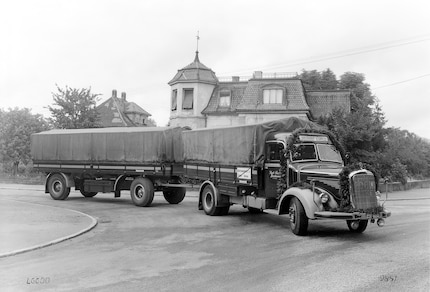
Source: Mercedes Benz AG
In the United States, truck manufacturers were spared any drastic legislative changes. Sure, there were weight regulations, some of which varied greatly from state to state until 1982. Certain states were generous with their length provisions, others had none at all. Either way, long-nose trucks continued to exist.
Truckers – modern cowboys of the road
In the 1970s, truckers became a cultural phenomenon; a predominantly male group, they were called modern-day cowboys – rebelling against speed controls and road tolls. That was the romanticised version.
In reality, truckers travelled the endless interstates, mile after mile, for days at a time. The distances in the United States are so great and the population so sparse that the truck isn’t only a working tool, but also a home on wheels.
In 1982, a new law cleared up the regulatory jungle for trucks in the USA. Among other things, it was defined across states that the length restriction measures the trailer only; the length of the tractor unit was no longer included, giving long-nose trucks in the USA even more freedom. As a result, the driver cabs became longer and better equipped. Even so, some trucks in the States are indeed flat-nose models. They’re especially used for city driving; for collecting trash or delivering packages, a smaller turning circle is more important than a luxurious cab.
Long noses have many advantages
For long distances, on the other hand, long-nose trucks are the go to. Due to the design, the distance between the axles is greater. This absorbs bumps on the highways and improves straight-line stability. Because the driver’s cab doesn’t sit atop the engine, the vibrations and heat are less noticeable. The nose also makes the trucks more streamlined, which has a positive effect on fuel consumption – at least in theory. The larger engines and the higher speed limit for trucks in the USA result in a higher consumption overall.
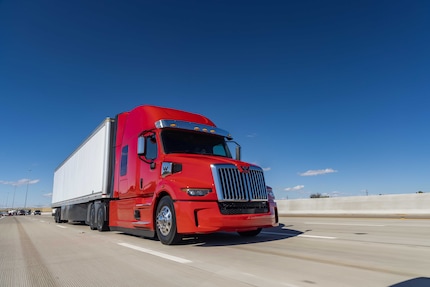
Source: Daimler Trucks
The long nose increases the truck’s crumple zone, meaning truckers are better protected in the event of a collision. This is especially important, because trucks are often allowed to drive as fast as cars on the highway. 110 or even 120 kilometres per hour aren’t uncommon. In Switzerland and Germany, the maximum speed for trucks is 80 km/h.
More comfort on the road and easier repairs
Long-nose trucks are also easier to repair. To get to the engine, you simply have to open some flaps on the nose. In flat-nose models, on the other hand, the entire cab has to be folded forward to gain access. This means that anything in the cab that might fly around and fall onto the windshield must be secured or removed beforehand.
That’s something truckers in the USA don’t have to worry about. In addition, their trucks offer ever more comfort for long-distance driving, with newer models coming with sleeper cabs.
These include a wardrobe, sink, refrigerator, microwave, air conditioning, sitting area or sofa and, of course, a comfortable bed (often a loft). Here’s a look inside the Volvo VNL 860, for example.
Modern cabs like this are over five metres long. The nose is somewhat shorter than on trucks from the 80s or 90s, which leaves more room for the actual cab. In the EU, the tractor unit could be a maximum of 2.35 metres long until 2020. That left just enough room in the cab to squeeze in a narrow bed behind the driver’s seat. Thanks to an amendment to the guidelines, cabs over three metres long are now permitted. With this update, the EU wants to allow for models with a rounded nose – and hence improved aerodynamics and lower fuel consumption. However, the development of a new truck costs a lot of money and time, so it’ll probably be some time before such models appear on the roads. Global manufacturers must simultaneously continue to develop different models depending on the continent. Truckers in the USA and Canada can continue pondering the flat design of European trucks. European truckers can satisfy their longings for US trucks through gaming. And if you’re curious to examine the different trucks in detail, you can assemble a model version yourself.
Header image: Martin Jungfer
Journalist since 1997. Stopovers in Franconia (or the Franken region), Lake Constance, Obwalden, Nidwalden and Zurich. Father since 2014. Expert in editorial organisation and motivation. Focus on sustainability, home office tools, beautiful things for the home, creative toys and sports equipment.
Interesting facts about products, behind-the-scenes looks at manufacturers and deep-dives on interesting people.
Show all